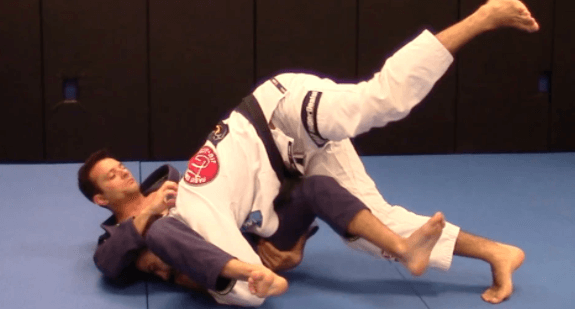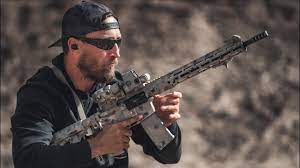Guard passing is an essential element of any serious jiu-jitsu practitioner’s game. However, despite many prominent members of the professional jiu-jitsu community recently marketing instructionals promoting their passing systems, there is still a recognizable lack of interest in becoming a formidable guard passer amongst academy students.
The rise of submission-only grappling and subsequent re-establishment of leglocks into tournaments have caused the necessity for advancing positional dominance to decline. Why should grapplers dedicate time, energy, and psychological resources to something with no quantifiable strategical advantage?
Like wrestling, guard passing is a physically taxing element of jiu-jitsu, often requiring explosive movements and griding transitions that chain techniques together. So, without the tangible premium points matches offer for their successful implementation, takedowns and guard passing have become less sought-after traits for young grapplers to master.
But, to become a complete grappler, guard passing must be at the center of any practitioner’s game.
And here’s why.
Advancement of Positional Dominance Is Jiu-Jitsu
There is a reason why jiu-jitsu’s primary goal is the advancement of positional dominance. Brazilian Jiu-Jitsu will always be a martial art first. It was created for this purpose from its earliest influences.
The systematic design of moving up the pyramid of positions allows a BJJ fighter to effectively limit an opponent’s ability to attack or defend. Each step up the ladder represents fewer options for an opponent and more control for the BJJ fighter neutralizing the athletic power center in the hips and legs along the way.
A takedown removes a standing opponent from their feet, detaching those powerful limbs from the ground, drastically hindering explosive movement. Remember that the power of striking with both hands and feet is also centered on hip explosions.
However, after the takedown, a dilemma remains. Even an unskilled attacker can utilize their powerful lower half via up kicks or an uninhibited return to standing. Now imagine that the same attacker has even a tiny amount of jiu-jitsu knowledge.
Effective guard passing puts the BJJ partitioner out of danger by “passing” the legs to eliminate their usage. Gaining side mount also offers various pins far superior to staying in a guarded position, even against an unskilled opponent.
Following this approach, the BJJ practitioner continues their ascent to full mount, then finally to back control, where their opponents’ options for attack are the most limited.
Thank you, John Danaher, for formulating this process into words on the Joe Rogan Podcast.
Guard Passing Builds Toughness
There are few components of BJJ as griding on practitioners as guard passing. The struggles generated from fighting in these positions teach grapplers to struggle for a win.
Two components come to mind when analyzing the effectiveness of BJJ as a martial art.
First are the techniques of jiu-jitsu, and second is the art’s ability to recreate the life or death scenarios of a combative encounter at full speed over time without the fear of serious injury.
I could debate the technical superiority of BJJ; however, in reality, many other arts better prepare a student for combat on a technical level. Particularly when encountering multiple attackers.
But, other martial arts that employ powerful, often lethal striking or weapons disarmament give a false sense of empowerment. While learning these skills is still valuable, the lethality of their implementation makes practicing them at full capacity impossible. Because doing so would end in death.
The addition of the tap to BJJ allows grapplers to continue fighting at full speed, minus striking, but still recreates real-life scenarios every time opponents slap and bump.
Guard passing plays an interesting role in this dynamic. The idea of fighting for a double underpass, knee slice combination in a self-defense situation seems silly, but the struggles between guard passing and guard retention between two experienced grapplers are intense. And these grueling exchanges push grapplers to fight for every inch in similar ways
to the circumstances of a real confrontation.
Submission grappling tends to be more nuanced and thoughtful, which is also a mindset successful grapplers need to focus on. But, grapplers that neglect the struggles of positional control through guard passing can become soft when pushed past their comfort zones by effective guard passers that trained their toughness just as much as their armbar mechanics.
Effective Guard Passing Improves Your Submission Game
By this point, the benefits of developing a guarding passing game should be more apparent. But, if some doubt still clouds the issue, this final point might finalize it.
Guard passing makes your submission game better too.
First, advancing positional dominance is designed to enhance submission attempts by limiting our opponent’s options to defend as we move up the ladder. So, common sense would suggest that more submissions appear as you move your way to the back.
But, effective guard passers also become better submission grapplers because of the pressure they put on their opponents. Guard passing at the highest levels of jiu-jitsu is a grind, and the constant chaining of passes together preoccupies opponents with the passer’s game instead of their own.
This pressure can frustrate a guard player into making mistakes, like leaving an ankle hanging and exposed for a leg lock entry. Not to mention the tax it has on them physically. Guard retention against a determined guard passer will crush their cardiovascular reserves.
Guard passing isn’t sexy or exciting. There are never highlight reels of over-under passes in high circulation in Instagram stories. But the benefits effective guard passing adds to a grappler’s game are many.
So, whether you want to catch up to that cocky blue belt or make a run at a WNO title, working on your guard passing will improve your game by making you a complete grappler.









